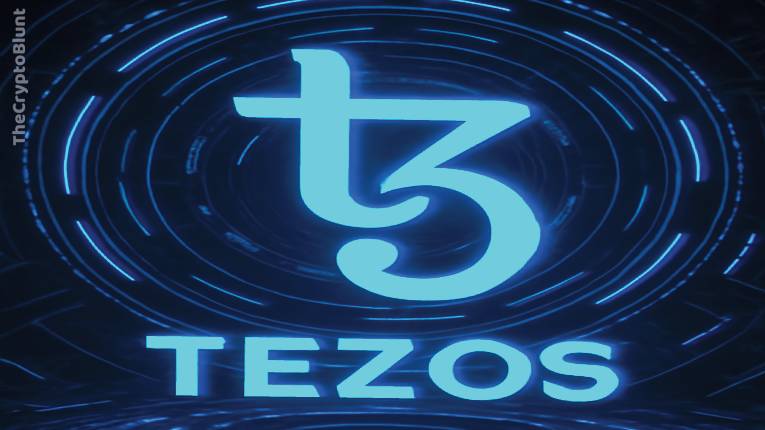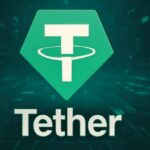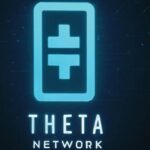Then I discovered Tezos, a blockchain built from the ground up with a unique solution to this problem: self-amendment through on-chain governance. This innovative approach immediately stood out, promising a more stable and adaptable future for decentralized applications.
- Part 1: The Foundations of the Digital Economy – Understanding Cryptocurrency and Blockchain
- Part 2: Demystifying Common Crypto Misconceptions
- Part 3: Why Crypto Matters – Real-World Applications and Benefits
- Part 4: The Tezos Ecosystem – The Self-Amending Blockchain
- Part 5: Getting Started in the Crypto World – A Beginner’s Perspective
This comprehensive guide is designed specifically for absolute beginners. We’ll cut through the jargon, tackle common misconceptions head-on, and show you why this technological revolution matters for everyone, not just tech enthusiasts or financial gurus. We’ll explain the fundamental concepts of crypto, dive deep into the Tezos Ecosystem, and reveal how its unique design fosters continuous evolution and a vibrant community. We believe in transparent education, providing you with accurate, well-researched information to help you navigate this exciting new frontier.
Let’s embark on this journey to understand the digital revolution, starting with the very basics.
Part 1: The Foundations of the Digital Economy – Understanding Cryptocurrency and Blockchain
Before we dive into the intricacies of the Tezos Ecosystem, it’s crucial to grasp the bedrock principles: cryptocurrency and blockchain. Think of them as the engine and the ledger of this new digital world.
What is Cryptocurrency? More Than Just Digital Money
At its simplest, cryptocurrency is a form of digital or virtual currency that uses cryptography for security. Unlike traditional currencies (like the Indian Rupee or US Dollar) issued and controlled by central banks, most cryptocurrencies are decentralized. This means they are not subject to government or financial institution interference.
Imagine a currency that lives purely online, secured by incredibly complex mathematical puzzles. That’s a cryptocurrency. Bitcoin, launched in 2009, was the first and remains the most well-known cryptocurrency. Since then, thousands of others have emerged, each with its own unique purpose and technology.
Key characteristics of cryptocurrencies:
- Digital: They exist only in digital form, not as physical coins or notes.
- Decentralized: No single entity controls them. Their operations are distributed across a network of computers.
- Secured by Cryptography: Advanced encryption techniques protect transactions and control the creation of new units.
- Peer-to-Peer: Transactions occur directly between users without intermediaries like banks.
- Immutable: Once a transaction is recorded, it cannot be altered or reversed.
Unpacking the Blockchain: The Transparent, Immutable Ledger
If cryptocurrency is the digital money, then blockchain is the revolutionary technology that underpins it. Think of a blockchain as a digital, public, and distributed ledger. Instead of a single bank keeping a record of all transactions, a blockchain shares this record across a vast network of computers worldwide.
The “block” in blockchain refers to batches of transactions. Once a block of transactions is verified, it is added to the “chain” of previous blocks, forming a continuous, chronological record. Each new block contains a cryptographic hash of the previous block, linking them together and making the chain incredibly secure and resistant to tampering. If someone tried to alter a transaction in an old block, it would invalidate all subsequent blocks, making the change immediately noticeable to the entire network.
(Consider adding an infographic here: A visual representation of blocks linked together, showing data and cryptographic hashes.)
Core principles of blockchain technology:
- Decentralization: No central authority manages the blockchain. The network of participants collectively maintains and validates it.
- Transparency: Every transaction ever recorded on the blockchain is visible to anyone on the network. While individual identities are often pseudonymized (represented by wallet addresses), the transaction data itself is public.
- Immutability: Once a transaction is added to the blockchain, it cannot be changed or removed. This creates an unchangeable historical record.
- Security: Cryptography ensures the integrity and authenticity of transactions and the overall ledger.
- Distributed Ledger Technology (DLT): The ledger is duplicated and shared across all participants in the network, making it highly resilient to failure.
Decentralization: The Power Shift
We’ve mentioned decentralization repeatedly, and for good reason. It’s a foundational concept that sets cryptocurrencies and blockchain apart from traditional financial systems.
In a centralized system, a single entity (like a bank, government, or corporation) holds all the power and control. They decide who can participate, what the rules are, and they maintain all the records.
In a decentralized system, control is distributed among all participants. There’s no single point of failure or control. This has profound implications:
- Increased Security: No single target for hackers to attack.
- Reduced Corruption: No single entity to bribe or coerce.
- Censorship Resistance: Transactions cannot be blocked or reversed by a central authority.
- Greater Accessibility: Anyone with an internet connection can participate, regardless of their location or financial status.
Consensus Mechanisms: How Blockchains Agree
For a decentralized network to function, all participants need to agree on the valid state of the blockchain. This “agreement” is achieved through consensus mechanisms. You might have heard of “mining” in relation to Bitcoin, which uses a “Proof of Work” (PoW) mechanism. PoW involves powerful computers competing to solve complex cryptographic puzzles to add new blocks. While secure, it’s energy-intensive.
Many newer blockchains, including Tezos, use more energy-efficient alternatives. Tezos operates on a unique variant of Proof of Stake called Liquid Proof of Stake (LPoS).
In LPoS:
- Instead of “mining” (solving puzzles), participants “stake” their cryptocurrency (locking it up as collateral) to have a chance to validate transactions and create new blocks.
- In Tezos, these validators are called “Bakers.”
- “Liquid” means that any XTZ token holder can participate. If you have enough XTZ (currently 6,000 XTZ for a “roll”), you can become a Baker. If you have less, or don’t want to run the infrastructure, you can delegate your XTZ to an existing Baker. Importantly, your tokens remain in your custody; you just delegate your voting rights and baking power.
- Bakers are chosen to produce and validate blocks based on the amount of XTZ they (and their delegators) have staked. They are rewarded with newly minted XTZ and transaction fees for their work.
- This system allows for much faster transaction speeds, lower energy consumption, and more inclusive participation compared to Proof of Work.
Part 2: Demystifying Common Crypto Misconceptions
The rapid rise of cryptocurrencies has, understandably, been accompanied by a surge of misinformation and skepticism. Let’s tackle some of the most prevalent myths head-on, replacing fear with facts.
Misconception 1: “Cryptocurrency is only for criminals and illicit activities.”
This is perhaps the most persistent and damaging myth. While it’s true that, like any form of money (cash, gold, traditional banking), cryptocurrencies can be used for illicit activities, the vast majority of cryptocurrency transactions are legitimate.
The reality:
- Transparency of Blockchain: Unlike cash, which is anonymous, blockchain transactions are publicly recorded and traceable. Every transaction leaves a digital footprint. This makes it harder to conduct large-scale, untraceable illicit activities with crypto compared to traditional banking systems, where money can be laundered through complex shell corporations.
- Law Enforcement Adaptation: Law enforcement agencies worldwide are increasingly sophisticated at tracing crypto transactions and have successfully recovered billions in illicit funds.
- Growing Legitimate Use: Cryptocurrencies are being adopted by major companies for payments, used in international remittances, and are forming the backbone of new financial systems (DeFi). The sheer volume of legitimate transactions far outweighs illicit ones.
Misconception 2: “Cryptocurrency is a scam or a Ponzi scheme.”
The volatility of cryptocurrency prices and the emergence of fraudulent projects have led some to label the entire space as a scam. This is an oversimplification that ignores the underlying technology and its genuine utility.
The reality:
- Distinguish Technology from Scams: Blockchain technology itself is a legitimate and innovative invention with wide-ranging applications beyond just cryptocurrency.
- Investor Beware: Like any new and unregulated market, the crypto space has its share of bad actors and speculative bubbles. There have been Ponzi schemes and fraudulent projects that prey on unsuspecting investors. This highlights the importance of thorough research (Do Your Own Research – DYOR) and due diligence before investing in any project.
- Utility and Innovation: Many legitimate crypto projects, including Tezos, are building real-world solutions, offering new financial services, revolutionizing data management, and creating new forms of digital ownership. These are not scams; they are technological innovations.
Misconception 3: “Cryptocurrency is bad for the environment.”
Concerns about the energy consumption of cryptocurrency mining, particularly Bitcoin’s Proof of Work mechanism, are valid and important. However, the narrative often oversimplifies the issue.
The reality:
- Energy-Efficient Alternatives: Tezos, with its Liquid Proof of Stake (LPoS) consensus mechanism, is significantly more energy-efficient than Proof of Work blockchains. Instead of massive energy consumption for computations, PoS relies on economic stake. This makes Tezos one of the most environmentally friendly blockchain platforms.
- Comparison to Traditional Finance: The traditional financial system also has a massive carbon footprint, from vast data centers and ATMs to bank branches and employee commutes. It’s a complex comparison, but it’s important to consider both sides.
- Focus on Solutions: The focus should be on encouraging sustainable practices and the adoption of greener technologies within the crypto space. Tezos is a prime example of a blockchain designed with energy efficiency in mind.
Misconception 4: “Cryptocurrency will replace all traditional money.”
While cryptocurrencies offer compelling advantages and are undoubtedly part of the future of finance, the idea that they will completely replace all traditional fiat currencies in the short to medium term is unrealistic.
The reality:
- Coexistence and Integration: It’s far more likely that cryptocurrencies will coexist with and integrate into traditional financial systems. We are already seeing this with institutional adoption, regulated crypto products, and central banks exploring their own digital currencies (CBDCs), some of which are even exploring Tezos as a platform.
- Regulatory Landscape: Governments and central banks are still figuring out how to regulate cryptocurrencies. Full-scale replacement would require a fundamental shift in global economic policy and public trust.
- Accessibility and Adoption Hurdles: While growing, mass adoption of crypto still faces hurdles in terms of user-friendliness, scalability, and price volatility.
- Specialized Use Cases: Cryptocurrencies excel in specific use cases, such as international remittances, decentralized finance, and digital ownership, but traditional money still serves as the primary medium of exchange for most everyday transactions.
Part 3: Why Crypto Matters – Real-World Applications and Benefits
Beyond the hype and the technical jargon, why should you care about cryptocurrencies and blockchain? The answer lies in their ability to solve real problems and open up entirely new possibilities.
Faster, Cheaper International Payments
Imagine sending money across borders without exorbitant fees and long waiting times. Traditional international transfers can be slow and expensive due to multiple intermediaries (banks, SWIFT networks).
How crypto helps: Cryptocurrencies enable peer-to-peer international transfers that bypass these intermediaries. Transactions can settle in minutes, often for a fraction of the cost, making it a game-changer for remittances and global commerce.
Financial Inclusion: Banking the Unbanked
Globally, billions of people are “unbanked” or “underbanked,” meaning they lack access to basic financial services like bank accounts, loans, or credit. This often impacts individuals in developing nations or those without traditional identification.
How crypto helps: All you need to participate in the crypto ecosystem is a smartphone and internet access. This opens up financial opportunities for underserved populations, allowing them to store value, send and receive payments, and even access decentralized lending platforms, empowering them economically.
Decentralized Finance (DeFi): A New Financial System
DeFi is one of the most exciting and rapidly growing applications of blockchain technology. It refers to a collection of financial applications built on decentralized blockchains. Think of it as a parallel financial system that operates without traditional intermediaries like banks, brokers, or exchanges.
What DeFi offers:
- Lending and Borrowing: Users can lend their crypto assets to earn interest or borrow assets by providing collateral, all without a bank.
- Decentralized Exchanges (DEXs): Trade cryptocurrencies directly with other users, without a centralized exchange holding your funds.
- Yield Farming: Put your crypto assets to work in various protocols to earn high returns.
- Stablecoins: Cryptocurrencies designed to maintain a stable value, often pegged to a fiat currency like the US Dollar, reducing volatility for everyday transactions.
DeFi offers greater transparency, accessibility, and potentially higher returns, but it also comes with its own set of risks, including smart contract vulnerabilities and high volatility. Tezos is a growing hub for DeFi, offering a stable and low-cost environment for these applications.
(Consider adding an infographic here: A simple diagram showing how DeFi services like lending and borrowing work without a central bank.)
Non-Fungible Tokens (NFTs): Digital Ownership Redefined
NFTs are digital assets that represent ownership of unique items, whether it’s digital art, music, collectibles, or even virtual land. Unlike cryptocurrencies, which are “fungible” (one Bitcoin is interchangeable with another), each NFT is unique and cannot be replicated.
How NFTs matter:
- Digital Scarcity: NFTs create verifiable digital scarcity, allowing creators to monetize their digital work in new ways.
- New Revenue Streams: Artists, musicians, and content creators can sell their digital creations directly to fans, cutting out intermediaries.
- Verifiable Ownership: Blockchain technology ensures transparent and immutable proof of ownership for digital assets.
- Gaming and Metaverse: NFTs are crucial for the development of play-to-earn games and virtual worlds (the metaverse), where users can truly own in-game assets.
Tezos has emerged as a popular and eco-friendly blockchain for NFTs, attracting a vibrant community of artists and collectors due to its low transaction fees and energy efficiency. Marketplaces like Objkt, FxHash, and Teia thrive on Tezos.
Supply Chain Management and Data Security
Beyond finance, blockchain’s immutability and transparency make it incredibly useful for tracking goods through supply chains, ensuring authenticity, and enhancing data security.
- Supply Chain: Companies can track products from origin to consumer, verifying their authenticity and preventing counterfeiting. This is especially useful for luxury goods, pharmaceuticals, and food products.
- Data Security: Blockchain can be used to create secure, tamper-proof records for sensitive data, from medical records to voting systems.
Tezos’s secure and auditable nature, along with its ability to undergo formal verification of smart contracts (a rigorous mathematical process to prove code correctness), makes it an attractive platform for enterprise and government applications. For instance, the French Armies and Gendarmerie’s Information Center uses Tezos to validate judicial expenses.
Part 4: The Tezos Ecosystem – The Self-Amending Blockchain
Now that we have a solid understanding of the fundamentals, let’s explore Tezos, a blockchain platform known for its unique approach to governance and evolution. Tezos was designed to solve a fundamental challenge in blockchain: how to upgrade the core protocol without causing disruptive “hard forks” (where a blockchain splits into two incompatible versions).
What is Tezos? A Blockchain Designed to Evolve
Tezos is an open-source blockchain network that can execute peer-to-peer transactions and serve as a platform for deploying smart contracts and decentralized applications (dApps). Its native cryptocurrency is tez, symbolized as XTZ (often called “tezzie”).
Launched in 2018, Tezos distinguishes itself with two core features:
- Self-Amendment: Tezos has a built-in, on-chain mechanism for proposing, selecting, testing, and activating protocol upgrades without the need for hard forks. This allows the network to adapt and integrate new technologies seamlessly.
- Liquid Proof of Stake (LPoS): An energy-efficient and inclusive consensus mechanism that allows all XTZ holders to participate in network security and governance.
How the Tezos Ecosystem Works: On-Chain Governance and LPoS
The heart of the Tezos ecosystem lies in its powerful combination of Liquid Proof of Stake and a unique on-chain governance model.
Liquid Proof of Stake (LPoS) in Detail
As mentioned earlier, LPoS is Tezos’s consensus mechanism. Here’s how it empowers participants:
- Bakers (Validators): These are network participants who lock up a certain amount of XTZ (currently 6,000 XTZ, known as one “roll”) to have the right to validate transactions, create new blocks (a process called “baking”), and participate in governance. Bakers are rewarded for their service.
- Delegators: If you don’t have enough XTZ to become a Baker, or you don’t want to run the technical infrastructure, you can delegate your XTZ to an existing Baker. When you delegate, your tokens remain in your wallet, fully under your control. You’re simply assigning your “baking rights” and “voting power” to that Baker. In return, the Baker typically shares a portion of the rewards they earn with their delegators. This makes participation accessible to virtually anyone holding XTZ.
- Random Selection: Bakers (or the Bakers to whom XTZ has been delegated) are randomly selected to propose and endorse blocks, proportional to their total staked amount. This randomness, combined with economic stake, secures the network.
- Efficiency: LPoS is significantly more energy-efficient than Proof of Work, aligning with growing global environmental concerns.
On-Chain Governance: The Self-Amending Protocol
This is where Tezos truly shines. It eliminates the need for contentious “hard forks” that can split communities and hinder development, a common issue in other blockchains.
The Tezos self-amendment process is a formalized, multi-stage voting procedure conducted entirely on the blockchain (on-chain):
- Proposal Period: Any Baker can propose an amendment to the Tezos protocol by submitting a hash of the proposed code change. Other Bakers can then upvote these proposals. The most-upvoted proposal (if it meets a minimum threshold) moves to the next stage.
- Exploration Period: The community (through their Bakers/delegations) votes “Yea,” “Nay,” or “Pass” on the single top proposal. A “supermajority” (e.g., 80% ‘Yea’ votes) and a certain “quorum” (minimum participation rate) are required for the proposal to proceed.
- Cooldown Period: If approved, a cooling-off period allows the community to further test the proposed upgrade on a testnet and prepare their infrastructure. This is crucial for stability.
- Promotion Period: A final vote is held on the proposal. If it again meets the supermajority and quorum requirements, it is formally approved.
- Adoption Period: After the Promotion Period, the protocol upgrade is automatically activated on the mainnet at a predetermined block height. This seamless transition avoids disruptive forks.
Each of these periods typically lasts about 14 days, making the entire upgrade cycle around 2-3 months. This iterative, democratic process ensures that Tezos can evolve efficiently, incorporate new features (like privacy solutions or scaling improvements), and adapt to the changing needs of its users and developers without compromising decentralization or stability.
(Consider adding an infographic here: A flowchart illustrating the 5 stages of the Tezos on-chain governance process.)
Key Innovations and Features of Tezos
Beyond its unique governance and consensus, Tezos offers several other compelling features:
- Formal Verification: Tezos supports smart contracts written in languages (like Michelson or LIGO) that are amenable to formal verification. This advanced technique uses mathematical methods to prove that a program’s code behaves exactly as intended, significantly reducing the risk of bugs and vulnerabilities in smart contracts – a critical advantage for high-value applications.
- Low and Predictable Transaction Fees: Tezos boasts very low transaction fees, which are often fractions of an XTZ. These fees are predictable and do not spike dramatically with network congestion, making Tezos attractive for dApps requiring high transaction volumes, such as gaming.
- Energy Efficiency: As a Proof of Stake blockchain, Tezos is inherently energy-efficient, making it an environmentally conscious choice for developers and users.
- Scalability Solutions (Smart Rollups, Etherlink): Tezos is continuously evolving its scaling capabilities. Smart Rollups are a Layer 2 scaling solution that can theoretically process millions of transactions per second, allowing dApps to operate at massive scale while inheriting the security of the Tezos mainnet. Etherlink is a new EVM-compatible (Ethereum Virtual Machine compatible) rollup on Tezos, designed to offer Ethereum developers a high-performance, low-cost environment with full EVM compatibility while benefiting from Tezos’s underlying security and governance. This opens up Tezos to a broader developer base.
- Robust Developer Tools: Tezos offers comprehensive developer tools, documentation, and support for multiple programming languages (including those that compile to Michelson, Tezos’s low-level smart contract language), fostering a vibrant developer ecosystem.
Real-World Applications and Benefits within the Tezos Ecosystem
The unique features of Tezos make it an ideal platform for a wide array of real-world applications:
- Non-Fungible Tokens (NFTs): Tezos has become a thriving hub for NFTs, attracting artists, collectors, and brands. Its low transaction fees and energy efficiency make minting and trading NFTs affordable and accessible. Major art projects, music platforms, and even gaming collectibles are finding a home on Tezos.
- Gaming (GameFi): With fast block times, low fees, and robust smart contract capabilities, Tezos is excellent for blockchain gaming. Play-to-earn models, in-game asset ownership via NFTs, and seamless user experiences are flourishing on the platform.
- Decentralized Finance (DeFi): The Tezos DeFi ecosystem is growing, offering services like lending, borrowing, decentralized exchanges (DEXs), and stablecoins. Its predictable fees make DeFi interactions more reliable for users.
- Enterprise and Government Use Cases: Tezos’s focus on formal verification, upgradeability, and governance makes it attractive for institutions. Examples include:
- Société Générale: A major French bank has explored using Tezos for Central Bank Digital Currencies (CBDCs) and tokenized securities experiments.
- California DMV: Explored using Tezos for digital car titles.
- Red Bull Racing: Uses Tezos for fan engagement and NFT initiatives.
- Luxury Brands: Leveraging Tezos for supply chain transparency and product authentication.
- Digital Identity & Self-Sovereign Identity (SSI): Tezos can be used to build secure and verifiable digital identity solutions, giving individuals greater control over their personal data.
- Tokenization of Real-World Assets (RWAs): Tezos is being used to tokenize various real-world assets, from fine art to commodities like uranium (as seen with Uranium.io), bringing traditional assets onto the blockchain.
Part 5: Getting Started in the Crypto World – A Beginner’s Perspective
So, you’ve grasped the basics, understood the benefits, and explored the unique Tezos Ecosystem. Now, how do you actually get involved? This section provides a high-level overview without offering financial advice, as the crypto market is inherently volatile and carries risks.
1. Education is Key (You’re Already Doing It!)
Before anything else, continue learning. Read articles, watch educational videos, listen to podcasts, and understand the specific projects you’re interested in. Never invest in something you don’t understand. Given Tezos’s unique features, dedicating time to their official documentation (tezos.com, tezosagora.org) and community channels is highly recommended.
2. Acquiring Cryptocurrency: Exchanges
The most common way to acquire cryptocurrency, including XTZ, is through a cryptocurrency exchange. These platforms allow you to buy and sell cryptocurrencies using traditional fiat currency (like INR or USD) or other cryptocurrencies.
Types of Exchanges:
- Centralized Exchanges (CEXs): These are like traditional stock exchanges. They hold your funds (custodial) and offer a user-friendly interface. Examples include Binance, Coinbase, Kraken, and in India, platforms like CoinSwitch Kuber or WazirX. They are generally easier for beginners and most major CEXs list XTZ. You can typically deposit Indian Rupees and use them to buy XTZ.
- Decentralized Exchanges (DEXs): These allow you to trade directly with other users without an intermediary. You retain control of your funds (non-custodial). For Tezos, there are DEXs like Vortex or QuipuSwap within the Tezos ecosystem where you can swap XTZ for other Tezos-based tokens. DEXs are more complex for beginners but offer greater security and censorship resistance.
Choosing an Exchange: Consider factors like security, fees, available cryptocurrencies, user interface, and regulatory compliance in your region. For beginners in India, starting with a well-known, regulated centralized exchange might be the easiest path.
3. Storing Your Crypto: Wallets
Once you acquire crypto, you’ll need a wallet to store it. Think of a crypto wallet not as a place that holds your actual coins (which always remain on the blockchain), but as a tool that holds your “private keys” – the cryptographic codes that prove your ownership and allow you to access and manage your cryptocurrencies.
Types of Wallets for Tezos (XTZ):
- Hot Wallets (Online): These are connected to the internet. They are convenient for frequent transactions but generally less secure than cold wallets.
- Exchange Wallets: Built into centralized exchanges. Easy to use but you don’t control the private keys (the exchange does).
- Software Wallets (Desktop/Mobile Apps/Browser Extensions): Popular options for Tezos include Temple Wallet (formerly Galleon), Trust Wallet, Ledger Live (with a Ledger hardware wallet), and Kukai Wallet (web-based).
- Cold Wallets (Offline): These are not connected to the internet, making them highly secure.
- Hardware Wallets: Physical devices that store your private keys offline (e.g., Ledger, Trezor). Considered the most secure option for storing significant amounts of crypto. Both Ledger and Trezor support XTZ.
Crucial Advice: Keep Your Private Keys/Seed Phrase Safe! If you lose your private keys or they are stolen, you lose access to your crypto. Many wallets provide a “seed phrase” (a list of words) that can be used to recover your wallet if the device is lost. Guard this seed phrase with your life! Never share it with anyone, and store it offline in a secure location.
4. Using Your Crypto: Transactions and Beyond
Once you have XTZ in your wallet, you can:
- Send and Receive: Transact directly with others on the Tezos network, benefiting from its low fees and fast finality.
- Trade: Exchange XTZ for other cryptocurrencies on exchanges or DEXs.
- Stake (Bake or Delegate): Participate in the LPoS consensus. If you have enough XTZ (6,000 XTZ), you can become a Baker. Otherwise, you can easily delegate your XTZ to an existing Baker to earn staking rewards and contribute to network security. This is a common way to earn passive income in the Tezos ecosystem.
- Participate in Governance: If you’re a Baker or have delegated to a Baker, you can vote on protocol upgrades, directly influencing the future development of the Tezos blockchain.
- Pay Transaction Fees: XTZ is used to pay the minimal transaction fees for operations on the Tezos network.
- Engage with dApps: Explore the growing number of decentralized applications built on Tezos, from NFT marketplaces and games to DeFi platforms.
Conclusion: Tezos – A Resilient, Evolving, and Inclusive Blockchain
The Tezos Ecosystem stands out in the blockchain landscape due to its pioneering approach to self-amendment and its inclusive Liquid Proof of Stake consensus mechanism. By building in a robust on-chain governance process, Tezos effectively addresses the challenge of blockchain evolution, allowing the network to seamlessly upgrade and integrate new technologies without divisive hard forks. This ensures its long-term adaptability and resilience.
Its energy-efficient design, coupled with low and predictable transaction fees, makes Tezos an incredibly attractive platform for developers and users alike, fostering a vibrant ecosystem for NFTs, gaming, DeFi, and enterprise solutions. Tezos is not just a blockchain; it’s a living, breathing digital organism designed to improve itself over time, driven by its community.
However, as with any emerging technology, it’s crucial to approach the Tezos Ecosystem with diligence and a commitment to continuous learning. The crypto market is dynamic and inherently volatile, and while the potential is immense, so are the risks.















